Application of Microfluidics in Drug Development from Traditional Medicine
- PMID: 36291008
- PMCID: PMC9599478
- DOI: 10.3390/bios12100870
Application of Microfluidics in Drug Development from Traditional Medicine
Abstract
While there are many clinical drugs for prophylaxis and treatment, the search for those with low or no risk of side effects for the control of infectious and non-infectious diseases is a dilemma that cannot be solved by today's traditional drug development strategies. The need for new drug development strategies is becoming increasingly important, and the development of new drugs from traditional medicines is the most promising strategy. Many valuable clinical drugs have been developed based on traditional medicine, including drugs with single active ingredients similar to modern drugs and those developed from improved formulations of traditional drugs. However, the problems of traditional isolation and purification and drug screening methods should be addressed for successful drug development from traditional medicine. Advances in microfluidics have not only contributed significantly to classical drug development but have also solved many of the thorny problems of new strategies for developing new drugs from traditional drugs. In this review, we provide an overview of advanced microfluidics and its applications in drug development (drug compound synthesis, drug screening, drug delivery, and drug carrier fabrication) with a focus on its applications in conventional medicine, including the separation and purification of target components in complex samples and screening of active ingredients of conventional drugs. We hope that our review gives better insight into the potential of traditional medicine and the critical role of microfluidics in the drug development process. In addition, the emergence of new ideas and applications will bring about further advances in the field of drug development.
Keywords: bioMEMS; drug development; microfluidics; traditional medicine.
Conflict of interest statement
The authors declare no conflict of interest.
Figures
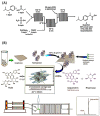
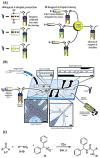
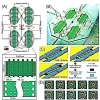

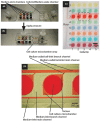

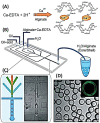










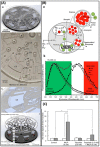
Similar articles
-
Microfluidics technology for drug delivery: A review.Front Biosci (Elite Ed). 2018 Jan 1;10(1):74-91. doi: 10.2741/e809. Front Biosci (Elite Ed). 2018. PMID: 28930605 Review.
-
[Development of antituberculous drugs: current status and future prospects].Kekkaku. 2006 Dec;81(12):753-74. Kekkaku. 2006. PMID: 17240921 Review. Japanese.
-
Advances in microfluidics devices and its applications in personalized medicines.Prog Mol Biol Transl Sci. 2022;186(1):191-201. doi: 10.1016/bs.pmbts.2021.07.012. Epub 2021 Aug 12. Prog Mol Biol Transl Sci. 2022. PMID: 35033284
-
The combination of nanotechnology and traditional Chinese medicine (TCM) inspires the modernization of TCM: review on nanotechnology in TCM-based drug delivery systems.Drug Deliv Transl Res. 2022 Jun;12(6):1306-1325. doi: 10.1007/s13346-021-01029-x. Epub 2021 Jul 14. Drug Deliv Transl Res. 2022. PMID: 34260049 Review.
-
[Research ideas and method on screening active components of traditional Chinese medicine against hepatotoxicity with mitochondria as target].Zhongguo Zhong Yao Za Zhi. 2021 Jan;46(2):306-311. doi: 10.19540/j.cnki.cjcmm.20200904.601. Zhongguo Zhong Yao Za Zhi. 2021. PMID: 33645116 Review. Chinese.
Cited by
-
Droplet-Based Microfluidics: Applications in Pharmaceuticals.Pharmaceuticals (Basel). 2023 Jun 28;16(7):937. doi: 10.3390/ph16070937. Pharmaceuticals (Basel). 2023. PMID: 37513850 Free PMC article. Review.
-
Droplets microfluidics platform-A tool for single cell research.Front Bioeng Biotechnol. 2023 Apr 19;11:1121870. doi: 10.3389/fbioe.2023.1121870. eCollection 2023. Front Bioeng Biotechnol. 2023. PMID: 37152651 Free PMC article. Review.
-
Nanotechnology-Based Diagnostics for Diseases Prevalent in Developing Countries: Current Advances in Point-of-Care Tests.Nanomaterials (Basel). 2023 Mar 31;13(7):1247. doi: 10.3390/nano13071247. Nanomaterials (Basel). 2023. PMID: 37049340 Free PMC article. Review.
-
Prevention of prostate cancer metastasis by a CRISPR-delivering nanoplatform for interleukin-30 genome editing.Mol Ther. 2024 Nov 6;32(11):3932-3954. doi: 10.1016/j.ymthe.2024.09.011. Epub 2024 Sep 7. Mol Ther. 2024. PMID: 39244641 Free PMC article.
-
Application of CRISPR-Cas System in Human Papillomavirus Detection Using Biosensor Devices and Point-of-Care Technologies.BME Front. 2025 Mar 19;6:0114. doi: 10.34133/bmef.0114. eCollection 2025. BME Front. 2025. PMID: 40110345 Free PMC article. Review.
References
-
- Qin W., He Y., Xiao J., Liang S., Wang S., Li P.C.H., Sun Y. A successive laminar flow extraction for plant medicine preparation by microfluidic chip. Microfluid. Nanofluidics. 2019;23:61. doi: 10.1007/s10404-019-2228-8. - DOI
-
- Wei R., Mi D., Yang L., Cui Y. Research Progress of Traditional Chinese Medicine Treatment on DiabeticNephropathy. TCM. 2022;35:82–86.
Publication types
MeSH terms
Substances
LinkOut - more resources
Full Text Sources

